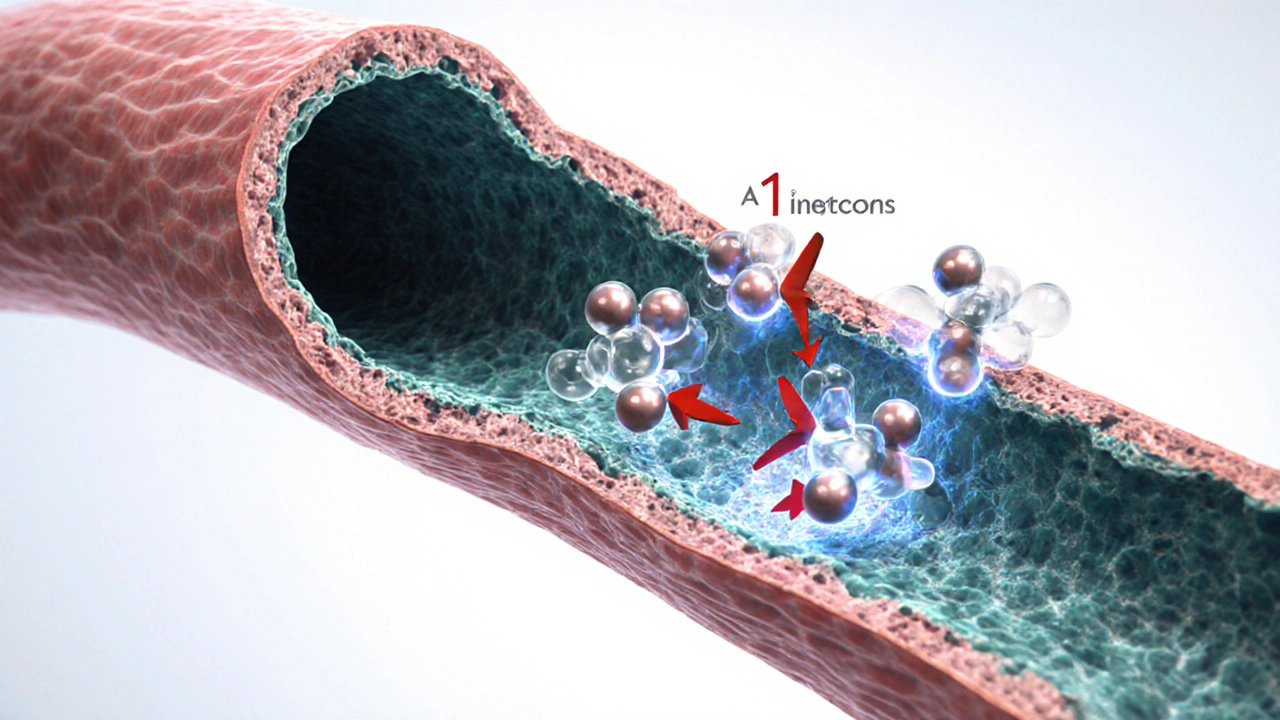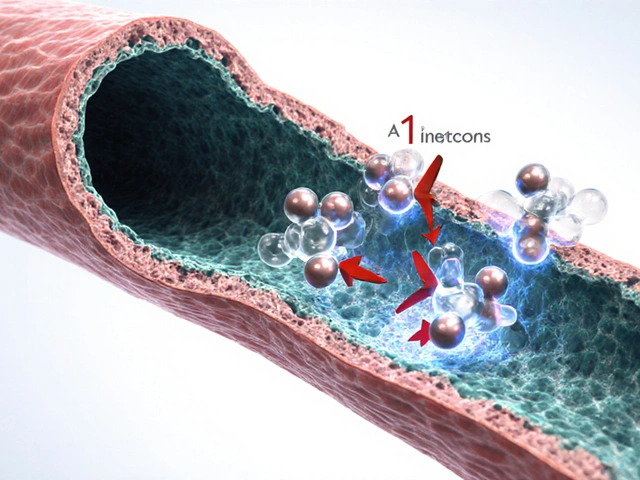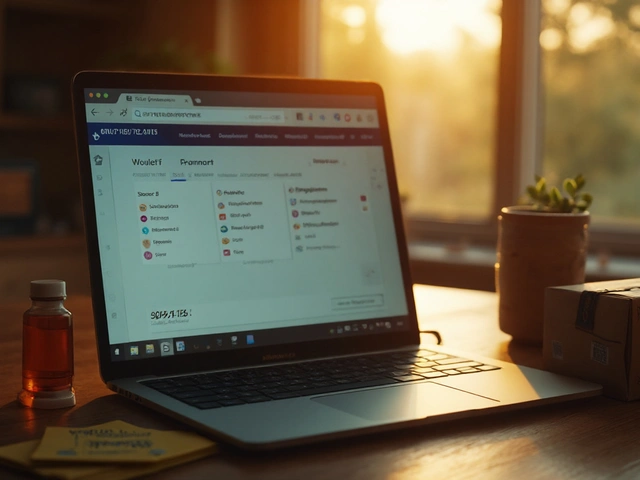ARB Comparison Tool
Hypertension Medication Comparison
Compare different ARB medications for hypertension based on your medical conditions and priorities. This tool helps you understand the key differences between Benicar (olmesartan) and its main alternatives.
Input Your Health Details
When doctors prescribe medication for high blood pressure, they often turn to a class called angiotensinII receptor blockers, or ARBs. Benicar is the brand name for olmesartan medoxomil, an ARB that blocks the effects of angiotensinII, a hormone that narrows blood vessels. Understanding how Benicar stacks up against its peers can save you costly trial‑and‑error and help you talk confidently with your clinician.
Benicar isn’t the only ARB on the market, but it does offer a unique mix of potency, once‑daily dosing, and a relatively low incidence of cough compared with older drug classes. Below we break down the science, the numbers, and the real‑world experiences that matter when you’re choosing a hypertension pill.
What is Benicar (Olmesartan) and how does it work?
Olmesartan belongs to the ARB family, which works by binding to the AT1 receptors on blood vessel walls. By blocking these receptors, olmesartan stops angiotensinII from causing vasoconstriction and aldosterone release. The result is relaxed arteries, lower blood volume, and a drop in systolic and diastolic pressures.
Key pharmacokinetic facts:
- Oral bioavailability around 26%.
- Peak plasma concentration in 1‑2hours.
- Half‑life of roughly 13hours, supporting once‑daily dosing.
- Excreted unchanged mainly via bile.
These traits translate into a steady BP‑lowering effect that persists over a 24‑hour period, making Benicar a convenient option for most patients.
Common alternatives: The other ARBs
Before we dive into head‑to‑head numbers, let’s meet the main competitors.
Losartan is the first‑generation ARB, approved in 1995, and is often used as the generic benchmark.
Valsartan gained attention after the ValsartanRecall of 2018, but its pharmacology remains solid-strong AT1 blockade with a half‑life of 6‑9hours.
Candesartan offers a slightly longer half‑life (around 9hours) and is sometimes preferred for patients with chronic kidney disease.
Telmisartan stands out for a half‑life exceeding 24hours, allowing flexible dosing times.
All four share the core ARB mechanism but differ in potency, dosing frequency, and side‑effect profiles.
How ARBs compare to other hypertension classes
While ARBs dominate this discussion, clinicians also consider ACE inhibitors, calcium‑channel blockers (CCBs), and beta‑blockers.
Lisinopril represents the ACE‑inhibitor class; it blocks the conversion of angiotensinI to angiotensinII, leading to a similar BP‑lowering effect but with a higher cough incidence.
Amlodipine is a widely used CCB that relaxes vascular smooth muscle via calcium antagonism, often combined with an ARB for additive control.
Choosing between an ARB and another class usually hinges on tolerance (cough, angioedema), comorbidities (diabetes, heart failure), and cost.

Direct comparison table
| Drug | Class | Typical Daily Dose | Half‑Life | Common Side Effects | Notable Advantage |
|---|---|---|---|---|---|
| Olmesartan (Benicar) | ARB | 20mg - 40mg | ~13h | Dizziness, hyperkalemia | Low cough risk, once‑daily |
| Losartan | ARB | 50mg - 100mg | ~6‑9h | Dizziness, upper‑respiratory infection | Extensive generic options, low cost |
| Valsartan | ARB | 80mg - 160mg | ~6‑9h | Headache, hyperkalemia | Well‑studied in heart failure |
| Candesartan | ARB | 8mg - 32mg | ~9h | Back pain, fatigue | Renal‑protective in diabetics |
| Telmisartan | ARB | 40mg - 80mg | ~24h | Diarrhea, muscle cramps | Longest half‑life, flexible dosing |
Pros and cons of Benicar specifically
Pros:
- Once‑daily dosing eliminates missed afternoon pills.
- Lower incidence of angioedema compared with ACE inhibitors.
- Strong BP reduction - average systolic drop of 12mmHg in pivotal trials.
- Well‑tolerated in patients with type2 diabetes.
Cons:
- Higher price than generic losartan in many markets.
- Rare reports of sprue‑like enteropathy (severe intestinal inflammation).
- Requires renal function monitoring, especially in older adults.
When might you pick a different ARB?
Individual response varies. Here’s a quick rule‑of‑thumb matrix:
- If cost is the biggest barrier, Losartan or generic Valsartan are budget‑friendly.
- If you need a longer dosing window (e.g., shift work), Telmisartan’s 24‑hour half‑life is handy.
- For patients with chronic kidney disease, Candesartan shows modest renal protection.
- If you’ve experienced a dry cough on an ACE inhibitor, any ARB-including Benicar-will likely be better tolerated.

Practical checklist for your next doctor visit
- Bring a list of current meds (including OTCs and supplements).
- Note any history of cough, angioedema, or kidney issues.
- Ask about baseline labs: potassium, creatinine, and eGFR.
- Discuss cost: ask if a generic version or insurance-covered alternative exists.
- Clarify the dosing schedule-morning or evening-and whether a once‑daily pill fits your routine.
Key takeaways
Benicar delivers reliable BP control with a convenient once‑daily schedule and a relatively clean side‑effect profile. Its main competition-Losartan, Valsartan, Candesartan, and Telmisartan-offers trade‑offs around cost, half‑life, and specific organ benefits. The best choice hinges on your medical history, budget, and how your body reacts to the medication.
Frequently Asked Questions
Can I switch from an ACE inhibitor to Benicar?
Yes. ARBs like Benicar are often used as a follow‑up when ACE inhibitors cause a persistent cough or angioedema. The switch typically involves a wash‑out period of 24‑48hours to avoid overlapping effects.
Is Benicar safe during pregnancy?
No. ARBs are classified as pregnancy‑categoryD. They can cause fetal kidney problems and should be stopped as soon as pregnancy is confirmed.
What labs should I monitor while on Benicar?
Baseline and periodic checks of serum potassium and creatinine are recommended. If you have diabetes, an HbA1c check is also wise, as ARBs can modestly improve glycemic control.
Why do some patients get a severe intestinal reaction with Benicar?
A rare condition called sprue‑like enteropathy has been linked to olmesartan. Symptoms include chronic diarrhea, weight loss, and villous atrophy. If these appear, stop the drug and seek gastro‑enterology evaluation.
How does Benicar compare to Telmisartan for night‑time dosing?
Telmisartan’s half‑life (>24h) makes it forgiving for evening doses, while Benicar’s 13‑hour half‑life still provides full 24‑hour coverage but is slightly more sensitive to timing. If you struggle with morning routines, Telmisartan may be a smoother fit.







